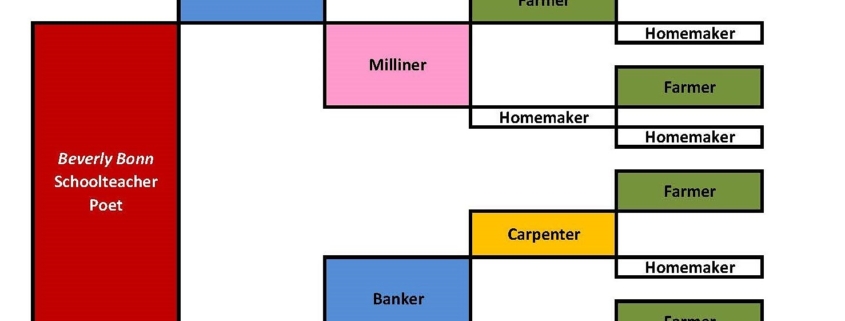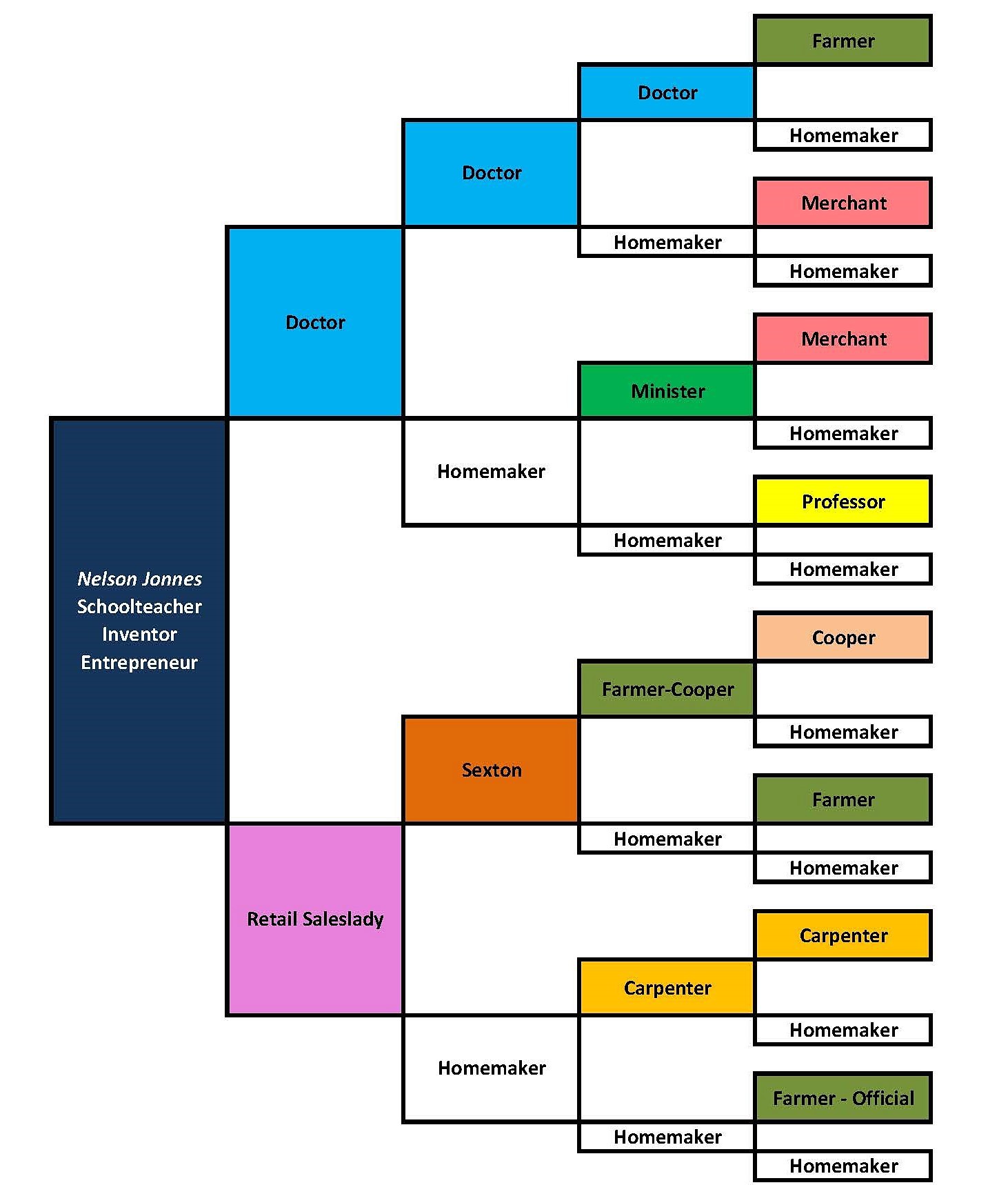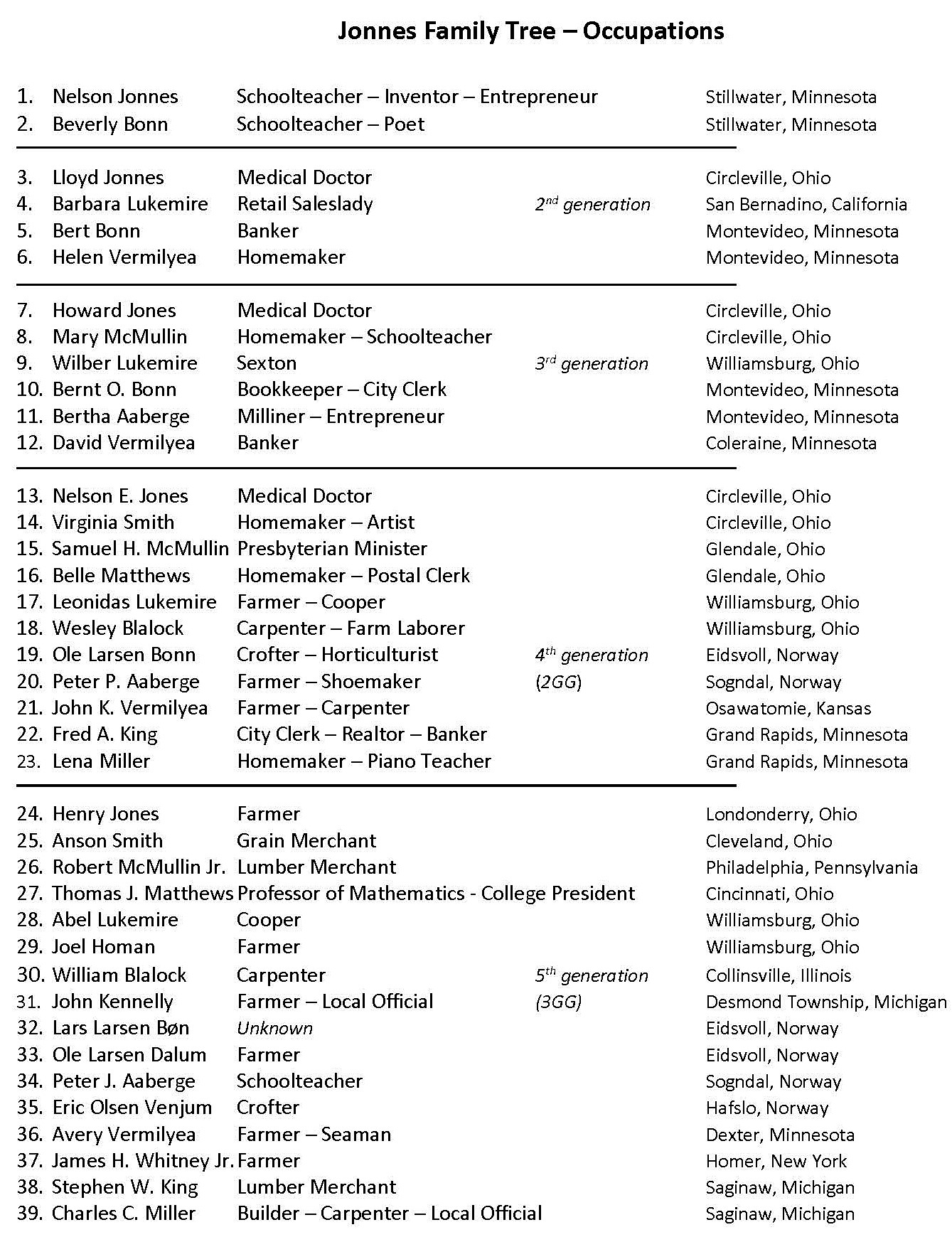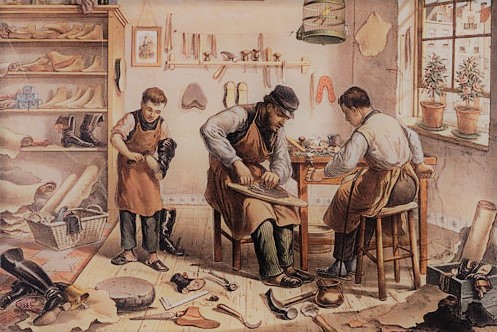Ancestors by Occupation III
This is the last in a series of three posts about my ancestor’s occupations. See the first two here and here.
In a nutshell, my ancestors were mainly merchants, bankers, doctors, scientists, teachers, clergy, local public officials, and of course, farmers. As for the manual trades, we were most familiar with wood and feet![1]Wood refers to carpenters, shipwrights, building contractors, and coopers; feet refers to cordwainers and shoemakers. This would have been a good topic for Mom to write a poem about, I think.
So with all that documentation and analysis behind us, which common occupations are NOT in my tree?
Legal Profession: I cannot find a single direct ancestor who was a trained lawyer, attorney, or judge. That’s a bit of a surprise.
Going into the law was something I strongly considered as a young man. I remember Dad mentioning to me when I was 27, “I always thought you would become a lawyer.”
“Well, jeez Dad, thanks for telling me now!”
The caveat is that numerous early American and colonial ancestors did serve in legal capacities, such as justices of the peace or magistrates. However, those kind of positions constituted part-time employment and typically did not require legal training, only a decent reputation and an ability to read and write. In some cases, being a justice-of-the-peace was akin to being a notary public today.
5GG Samuel King (1755?-1825?) is one example. He served as an associate judge on a panel of three county judges in old Portage County, Ohio between 1815-1820.[2]I’m confident Samuel King is an ancestor, but there remain questions about the exact line of descent. Again, this would have been part-time employment, requiring him to sit in session at the courthouse in Ravenna, Ohio probably two or three times a year. His main source of income was his farm and tavern.
5GG William McMullin (1729-1797) is another example. He was appointed a justice of the peace in Philadelphia as early as 1777 and served in that capacity for about 20 years, until his death in 1797. However, his primary occupation was shipwright.
Law Enforcement & Firemen: 3GG Charles C. Miller (1822-1885), an immigrant from Brunswick, Germany, was a building contractor in Saginaw, Michigan, but ran unsuccessfully for town sheriff in 1878. He later served a term as under-sheriff when his brother Henry became the sheriff. Other than this short-term instance, there are no professional policemen or firemen in my tree.
Nor can I include myself. Even though my employer was the FBI, I worked in the intelligence not the criminal branch. I did not join the FBI because of any original interest in law enforcement.
Like the legal profession, this is one of those fields where we have to provide the caveat that some ancestors in early colonial times served temporarily or part-time as local constables or deputy sheriffs.
Professional Military: We are not a particularly military family. Although many ancestors served in uniform and we have one historically important military hero in our family – 4GG Sgt. William Brown – no man in the last 6 generations, at least, made the military their profession.[3]William Brown is one of only three men known to have received an original Purple Heart from Gen. George Washington. See blog post here. I plan to provide an analysis of my ancestors’ military participation in a future post. We have a fair number who served in the Revolutionary War, War of 1812, and the Civil War.
My mother commented that the men in her family were very lucky when it came to World War I and II military service. Her father Bert Bonn (1902-1964) was too young for WWI and too old for WWII and her grandfathers Bernt Bonn (1856-1937) and David Vermilyea (1882-1950) were both too old for WWI.[4]David Vermilyea was registered for WWI service, but was 36 at the time and unlikely to be drafted. I’m not sure the men looked at it that way, but Mom certainly did.
Industrial Work: Modern industrial occupations (e.g., factory workers, coal miners, machinists, railroad employees) are missing from my tree. The family has its share of blue-collar workers, to be sure, but they tended to be craftsmen engaged in traditional trades such as carpentry, shoemaking, weaving, baking, tanning, or millinery rather than in industrial trades.
Sailors & Fisherman: Other than the seven years at sea that 3GG Avery Vermilyea (1820-1904) spent as a young man, ages 16-23, I haven’t found any sailors or fishermen in our tree. (Avery settled down as a farmer once he returned home.) On the other hand, there is a strong shipbuilding tradition in my father’s ancestry.
Newspapermen & Journalists: I kind of half-expected to find an ancestor who ran a local newspaper but have been disappointed in that search. 4GG John Tabele (1767-1810) did have a brother, Philip, who ran a newspaper in Manhattan from 1807 – 1813 called the American Patriot & Public Advertiser – but that’s the closest we come.
References
| ↑1 | Wood refers to carpenters, shipwrights, building contractors, and coopers; feet refers to cordwainers and shoemakers. |
|---|---|
| ↑2 | I’m confident Samuel King is an ancestor, but there remain questions about the exact line of descent. |
| ↑3 | William Brown is one of only three men known to have received an original Purple Heart from Gen. George Washington. See blog post here. |
| ↑4 | David Vermilyea was registered for WWI service, but was 36 at the time and unlikely to be drafted. |





